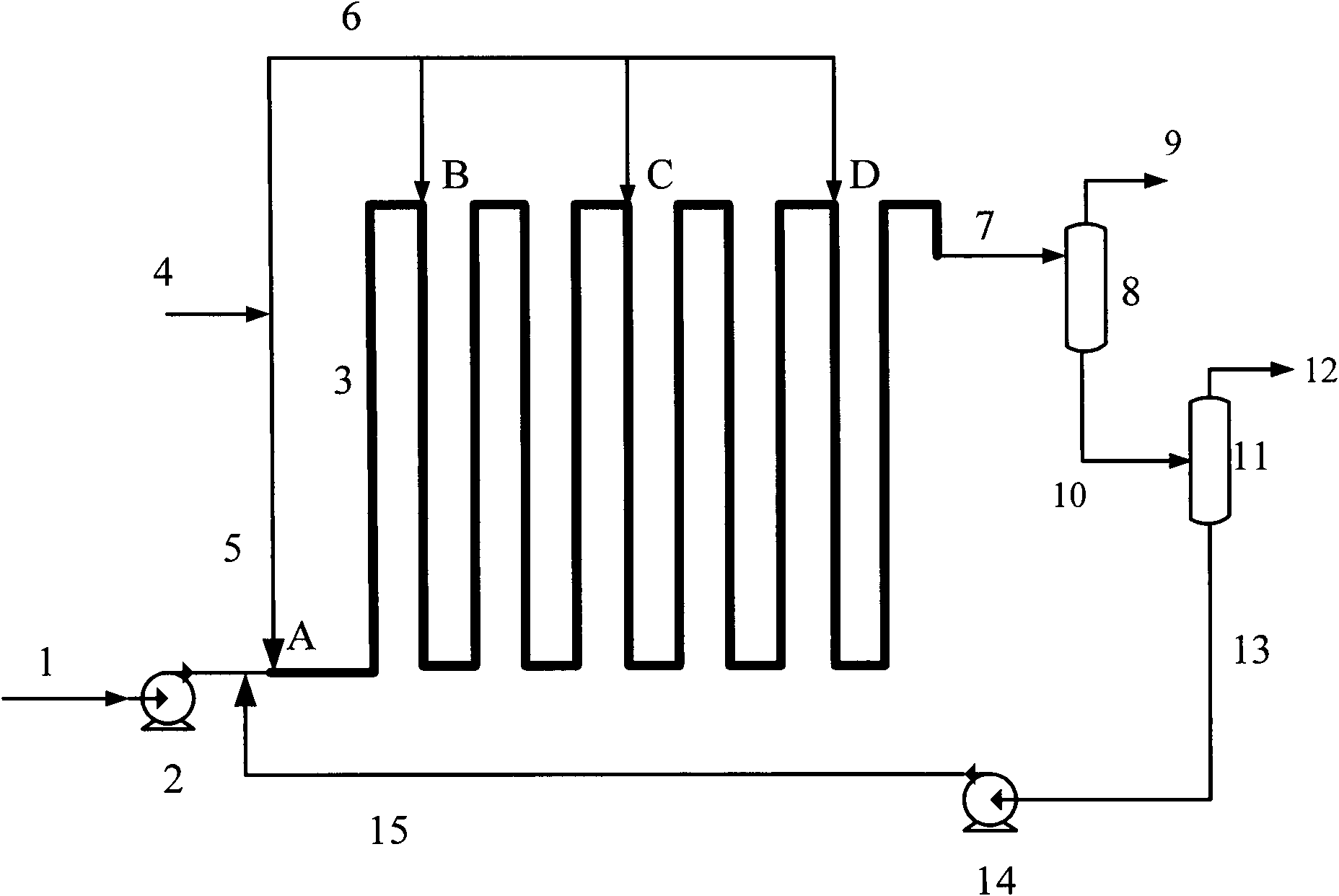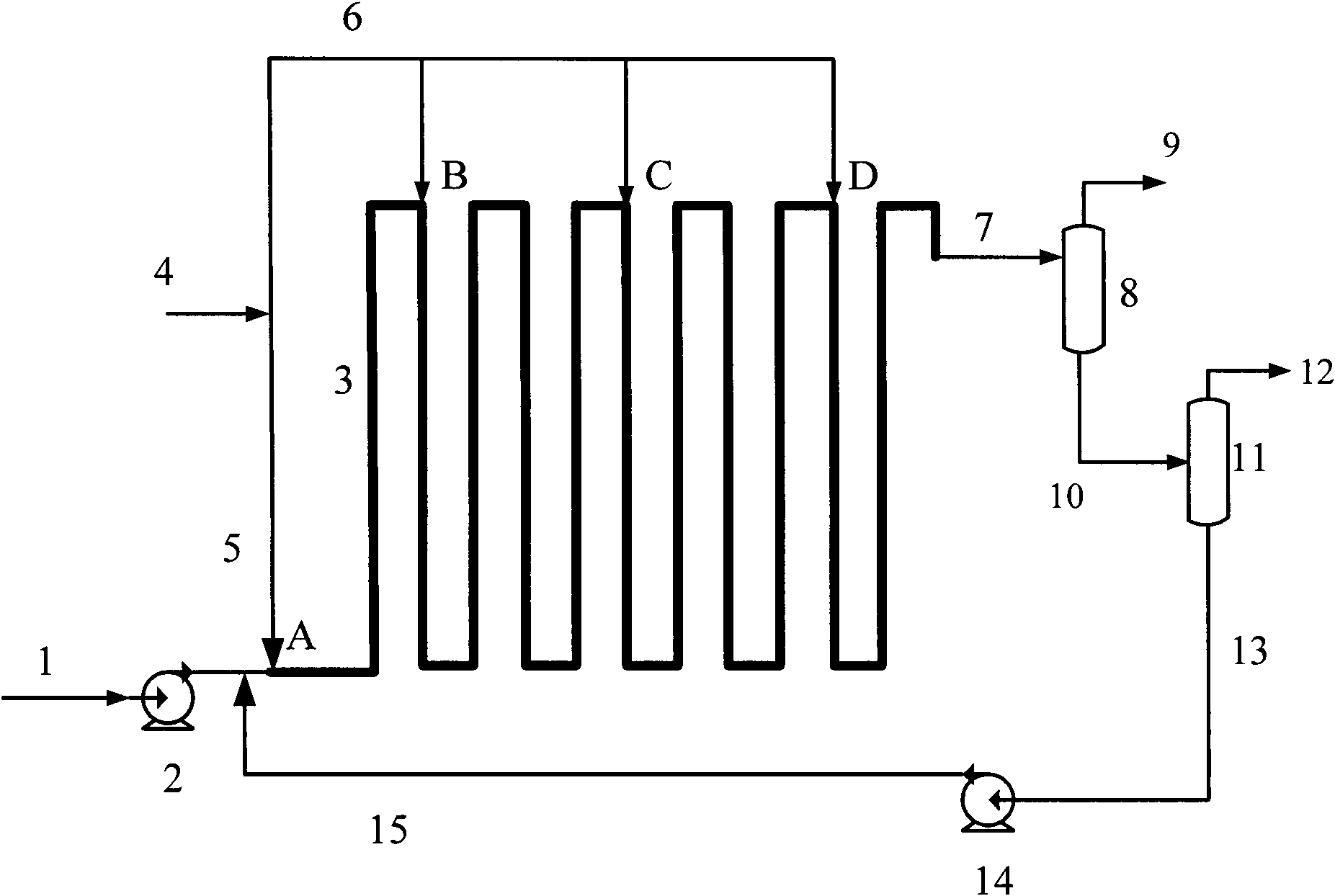Heavy oil hydrogenation conversion method
A heavy oil hydrogenation and heavy oil technology, which is applied in the fields of hydrocarbon oil cracking and petroleum industry, can solve the problems of increasing heavy oil processing cost, large reactor wall thickness, and difficult manufacturing, and achieves reduction of heavy oil hydrogenation conversion cost and shortened reaction time Time, the effect of improving the utilization rate
- Summary
- Abstract
- Description
- Claims
- Application Information
AI Technical Summary
Problems solved by technology
Method used
Image
Examples
Embodiment 1
[0035] Using the process flow shown in the accompanying drawing, will contain 1000ppm active metal FeSO 4 The heavy oil raw material of the slurry catalyst is sent into the tubular reactor with a flow rate of 10,000kg / h using a high-pressure pump. The flow state in the tubular reactor is turbulent, with a diameter of Φ55mm, a length of 500m, and a reaction temperature of 380- 460°C, pressure 16MPa. Hydrogen is respectively from the entrance of the tubular reactor, 60m (accounting for 12% of the total length), 150m (accounting for 30% of the total length), 250m (accounting for 50% of the total length) and 350m (accounting for 70% of the total length) from the entrance of the tubular reactor Injection at five points at , the molar ratios of injected hydrogen to heavy oil are 5, 4.5, 4, 3.5 and 3, respectively. The reaction product is analyzed, and the heavy oil conversion rate is calculated according to the following formula,
[0036]
[0037] The obtained heavy oil convers...
Embodiment 2
[0039] Using the process flow shown in the accompanying drawing, the heavy oil raw material is mixed with 100ppm MoS 2 Mix with 500ppm FeS to form heavy oil slurry. The heavy oil slurry is sent into a tubular reactor with a flow rate of 20,000kg / h using a high-pressure pump. The flow state in the tubular reactor is turbulent, with a diameter of Φ219mm, a length of 250m, and a reaction temperature of 400-480°C. The pressure is 30MPa. Hydrogen respectively from the entrance of the tubular reactor, 40m (accounting for 16% of the total length), 90m (accounting for 36% of the total length), 150m (accounting for 60% of the total length) and 200m (accounting for 80% of the total length) from the entrance of the tubular reactor Inject at 5 points, and the molar ratios of the amount of hydrogen injected to the heavy oil slurry are 10, 2.5, 2.5, 2.5 and 2.5 respectively. The conversion rate of the obtained heavy oil was 92%.
PUM
 Login to View More
Login to View More Abstract
Description
Claims
Application Information
 Login to View More
Login to View More - Generate Ideas
- Intellectual Property
- Life Sciences
- Materials
- Tech Scout
- Unparalleled Data Quality
- Higher Quality Content
- 60% Fewer Hallucinations
Browse by: Latest US Patents, China's latest patents, Technical Efficacy Thesaurus, Application Domain, Technology Topic, Popular Technical Reports.
© 2025 PatSnap. All rights reserved.Legal|Privacy policy|Modern Slavery Act Transparency Statement|Sitemap|About US| Contact US: help@patsnap.com



